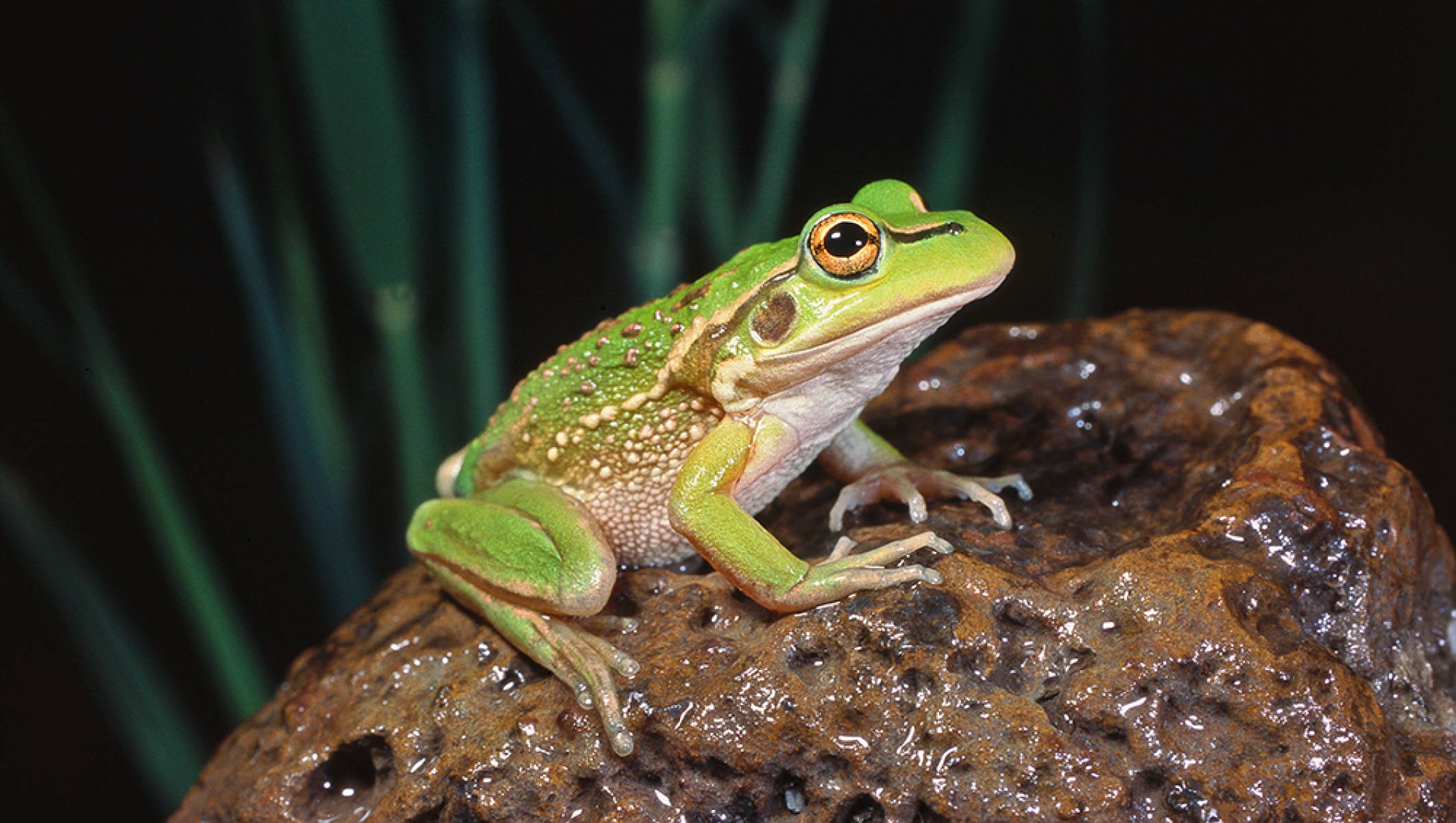On this page:
About
The ground-dwelling growling grass frog is typically olive to emerald-green with brown spotting and a distinctive ‘warty’ back. It has a low growling call, which sounds a bit like a motorbike.
Up until the 1990s, growling grass frogs were once widespread throughout south-eastern Australia. However, due to a combination of serious threats, this little critter was listed as 'threatened with extinction' more than 20 years ago in Victoria and Australia. It is continuing to decline in many areas.
Threats
- habitat loss
- drought
- diseases such as chytrid fungus
- predatory fish that eat eggs and tadpoles
- changes to stream flows and quality.

What we're doing
We work with Melbourne Water to protect and connect populations of growling grass frogs by securing conservation areas and creating breeding wetlands.
These areas protect existing and potential breeding habitats in stream pools and off-stream wetlands, dams and quarry pits. Frogs forage for insects and spiders in these areas,and shelter under rocks and logs during winter. They also migrate between wetlands and waterways.
Creating 80 purpose-built wetlands around Melbourne
We want to make sure the iconic growling grass frog remains a happy resident along more than 140 km of creeks and rivers around Melbourne.
That's why we are creating and maintaining around 80 breeding wetlands along Merri Creek, Kororoit Creek, Werribee River, Jacksons Creek and Cardinia Creek to support connected populations. These areas are part of the traditional lands of the Wadawurrung, Wurundjeri and Bunurong peoples.
Our first wetland, created in partnership with Woodlea developers and Melbourne Water, is now home to many hoppy residents. Check out the time lapse video below.
Our plan for healthy habitats
From creating the best habitats to making sure frogs are connected in the conservation areas, our Growling grass frog masterplan package outlines how we will be working with our stakeholders to:
- create, enhance and maintain the best possible habitat
- ensure habitats are connected
- support decision-making for the protection of existing and potential breeding habitats.
Building hoppy homes
The habitat design standards (see below) help make sure that we build and maintain suitable places for growling grass frogs to live. The standards focus on:
- creating effective breeding wetlands
- reducing the impact of chytrid fungus.
These standards also cover land in the conservation areas, such as grassy foraging areas, over-wintering sites and movement corridors between wetlands.
Fencing for frogs
Conservation areas for growling grass frogs need to be protected with suitable fencing. The right fencing and gates make it easier for land managers to safely access and maintain the land.
Different fencing requirements are needed throughout the development process, including permanent fencing. That’s why you need to prepare a fencing plan.
Please ensure your fencing plan is consistent with:
- CEMP semi-permanent fencing requirements.
- functional layout plans – ensures management access points to conservation areas are correctly located and have suitable vehicle crossovers
- landscape plans
- requirements for permanent fencing for growling grass frog conservation areas (see documents below).
Securing the most important areas
Within the conservation areas, we’ve mapped out ‘Areas of strategic importance’, which are designed to protect existing and potential breeding habitats from disturbance. This helps partners and developers avoid and minimise impacts on the most critical parts of the growling grass frog conservation areas.
Download spatial files or look at our Native Vegetation Information System (NVIM) to find out more.
Growlers getting around safely
All roads and crossings in conservation areas must meet the growling grass frog crossing design standards.
These guide how to provide easy passage for frogs under roads, railway lines and other infrastructure that can make it difficult for them to move between habitats.
Hoppy new residents
Check out this time-lapse of our first purpose-built wetland.
Is it a motorbike?
Listen to the call of the growling grass frog.
More information
Please contact msa.bioconservation@deeca.vic.gov.au.
Page last updated: 31/10/24
